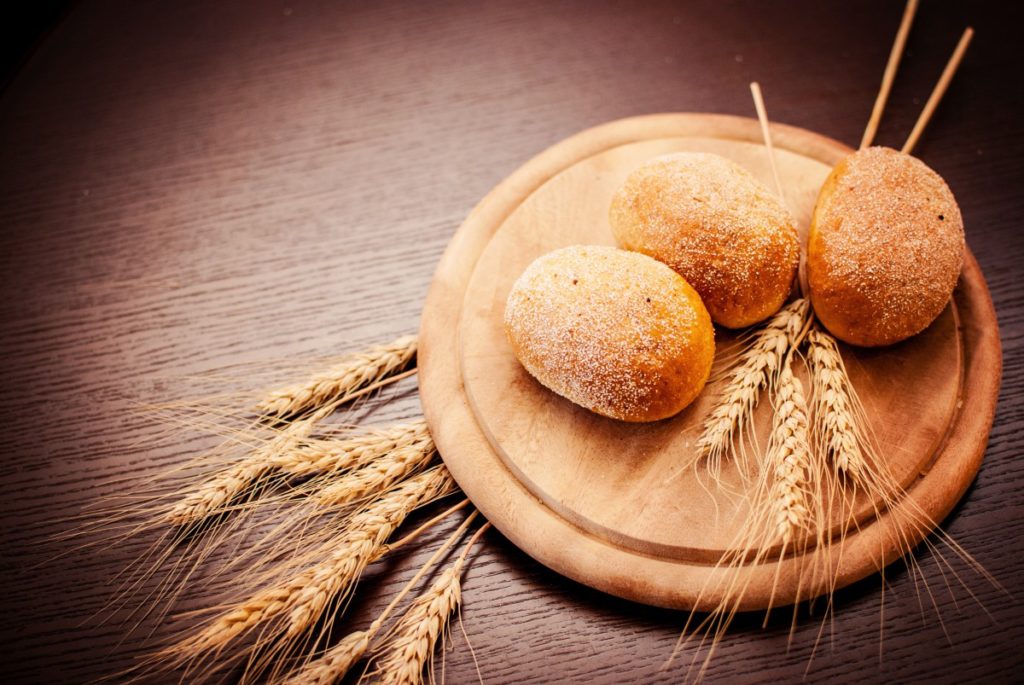moving to crisp and crackle
breathing edge of the knife of the oven.
noise of the shop. noise of the farmer. market.
on this slab of lord.
Kamau Braithwaite, “Bread”
——-
Mechanically, methodically, and by memory Beylul’s grandmother prepares the bread for lunch. A great bowl of teff flour, water, and yeast have been fermenting on the counter for days in preparation to become injera, a type of unleavened bread native to Ethiopia and Eritrea. The soupy batter is foamy at the top and has the distinctive, sour smell of vinegar. She pours the batter from a measuring cup onto a hot skillet until it forms bubbles all around, like a pancake. The result is a thin, acorn-colored round the size of a dinner plate. The bubbles in injera are necessary to provide traction for the stew it will be served with. When Beylul invites me over to her house for Eritrean food, injera takes the place of forks and knives. We dine happily.
——-
The first baguettes I ever made came out of the oven too skinny and too blonde. I made them because Teences ran away. I hadn’t seen his gray body and half-tail for eighteen hours. My mother used to tell me: Cooking is an art, but baking is a science. In my panic I could think of neither art nor science, and I steadied my trembling hands by burying them in flour. While I kneaded the dough I thought of ways to tell my friend Samantha I lost her cat while she was in France for the summer. While the loaves cooled, I wiped beads of fear sweat from my forehead until I heard Teences meowing softly outside. He had been hiding from the elements on my neighbor’s rooftop. Wet and afraid, I fed him bites of my under-salted anxiety bread until he fell asleep in my arms.
——-
The local Iranian grocery store, ten minutes from my parents’ house, prepares fresh sesame seed-encrusted sangak, the traditional bread of the Persian army. Hungry children with their busy parents form a line beginning in the bakery section and, depending on the time of day, stretch far out of the store. The bakers shuffle tirelessly to griddle and serve the massive sheets of flatbread, which are long enough to swaddle an infant. The sangak comes to me on a sheet of brown paper, bellowing steam. I drape it carefully over the side of a shopping cart to prevent it from sticking to itself. I learned of this bread at a southern California high school that I was a new student at. On one of my first days there, I sat on a concrete bench and ate my lunch alone, until a new friend, Beylul, takes mercy on me and offers me an olive branch of bread.
——-
Stéphanie and Hayden and I are in my little Kia speeding down US 395 towards Los Angeles. We had been in the car for nine hours when we finally reached LA. We packed only two loaves of French bread and some instant coffee. Stéphanie tells us Americans know nothing of good coffee or good bread, but damn this Raley’s bread and Nescafe is alright. My Kia is a café somewhere in Lyon where the women wear red lipstick and Breton shirts and the men are eternally handsome. Everything is black and white; don’t ask me how. Somewhere around hour five Stéphanie reveals that she sneakily ate an entire loaf without sharing. A secret: the French, or maybe just Stéphanie and Jean Valjean, will steal your bread if left unattended. You know a good friend has become your sister when she eats half the total food supply and you love her nonetheless.
——-
One hundred and eighty-three years ago, the American government ordered a mass exodus of the Navajo from present-day Arizona into New Mexico, where the earth is barren and dusty. The Americans provide white flour, processed sugar, and lard to the indigenous and tell them figure it out. My first roommate in college is a product of the Long Walk. One night, she shows me how to cut shortening and sugar into flour and salt and, with a bit of water, pat it into dough. We fry dough rounds into frybread, the bread that kept her people alive.
——-
In my own house, a blend of heritages, we make cornbread. The pan of choice is always cast-iron, and it must be scalding to form a good crust, so it waits in the hot oven patiently while the batter is prepared. Combine a bit of sugar, flour, baking powder, salt and cornmeal to a mixture of eggs, buttermilk, and either melted salted butter or bacon grease. Your choice. The secret ingredient is one tablespoon of corn syrup. This is the only definite measurement; everything else is measured by eye. Stir until lumpy, definitely not smooth. Pour into the pan quickly so as not to let it cool down. Bake until the house smells of love and the top is a round, light brown dome. Save a slice with to be eaten with honey and butter and a glass of milk for dessert.
——
A time ago in the indiscriminate stretches of the Middle East, a man proclaimed, “I have compassion for these people; they have already been with me three days and have nothing to eat. I do not want to send them away hungry, or they may collapse on the way.” There were but five loaves of bread and two fishes, but He was not discouraged. The man took hold of the loaves and fishes, then looked skyward and expressed his profound gratitude for the treasures he held. He broke each loaf and fish into innumerable, blessed pieces. A miracle, the first of all miracles: All five thousand humans ate the broken bread and none left hungry.

Nicole Ross recently graduated a degree in English from Sierra Nevada College. She
greatly enjoys cooking and currently lives and works on the north shore of Lake
Tahoe.
Follow her on Instagram at @iamnicoleross.


Comments are closed.